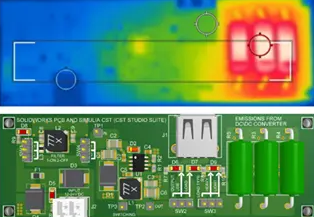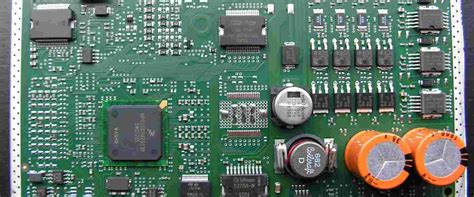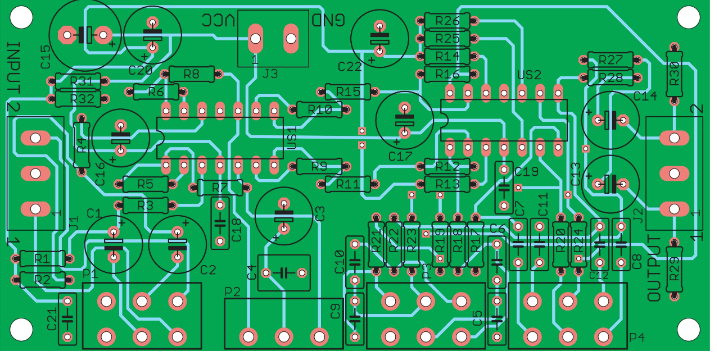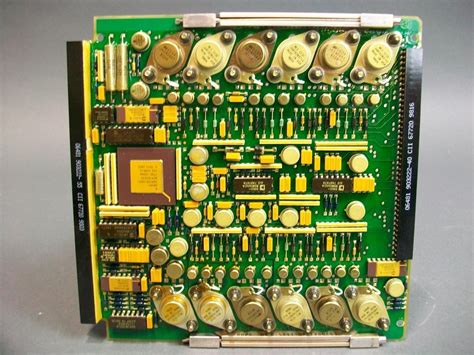The Evolution and Future Prospects of the Server PCB Industry
Introduction
The server Printed Circuit Board (PCB) industry has become a critical component of the global technology infrastructure, serving as the backbone of modern data centers, cloud computing, and enterprise IT systems. As digital transformation accelerates across all sectors, the demand for high-performance server PCBs continues to grow exponentially. This 2000-word article examines the current state of the server PCB industry, key technological advancements, market drivers, challenges, and future prospects that will shape this essential sector.

Current Market Landscape
The global server PCB market has experienced consistent growth over the past decade, with market research firms estimating the industry to be worth approximately $3.5 billion in 2023. This growth trajectory is expected to continue, with compound annual growth rates (CAGR) projected between 6-8% through 2030.
Several factors contribute to this expansion:
- Cloud Computing Boom: The rapid adoption of cloud services by businesses of all sizes has driven massive investments in data center infrastructure worldwide.
- 5G Deployment: The rollout of 5G networks requires substantial edge computing resources, increasing demand for specialized server hardware.
- AI and Machine Learning: The artificial intelligence revolution has created need for high-performance computing infrastructure with specialized PCB requirements.
- IoT Expansion: The proliferation of Internet of Things devices generates enormous amounts of data that must be processed in server farms.
Major players in the server PCB market include established manufacturers like Unimicron, Zhen Ding Technology, TTM Technologies, and Shennan Circuits, alongside emerging specialists focusing on high-density interconnect (HDI) and advanced packaging solutions.
Technological Advancements Driving the Industry
High-Density Interconnect (HDI) PCBs
Modern server architectures demand increasingly complex PCBs that can accommodate more components in smaller spaces. HDI technology has become essential for server applications, offering:
- Finer line widths and spacing (down to 25µm/25µm)
- Microvias and stacked vias for improved routing density
- Improved signal integrity for high-speed applications
- Better thermal management characteristics
High-Layer Count Boards
Contemporary server motherboards now routinely feature 16-24 layers, with some high-end designs exceeding 30 layers. This multilayer approach allows for:
- Separation of power and ground planes
- Dedicated signal layers for different bus standards
- Improved EMI/RFI shielding
- Enhanced power delivery networks
Advanced Materials
The shift toward higher frequencies and faster data rates has necessitated the adoption of specialized PCB materials:
- Low-loss dielectrics (Dk < 3.5, Df < 0.005)
- Thermally stable substrates for improved reliability
- Halogen-free materials for environmental compliance
- High-Tg materials for lead-free assembly processes
Embedded Components
Server PCBs are increasingly incorporating embedded passive and active components to:
- Reduce board space requirements
- Improve electrical performance by minimizing parasitic effects
- Enhance reliability by eliminating solder joints
- Enable novel cooling strategies
Market Drivers and Growth Opportunities
Data Center Expansion
The construction of hyperscale data centers by cloud providers (AWS, Microsoft Azure, Google Cloud) continues at a record pace, with each facility requiring thousands of server PCBs. Industry analysts estimate that global data center IP traffic will reach 20.6 zettabytes by 2025, necessitating substantial infrastructure investments.
AI and GPU Server Demand
The artificial intelligence boom has created specialized requirements for server PCBs:
- Higher power delivery capabilities (up to 1000W per GPU)
- Enhanced thermal management solutions
- Ultra-high-speed interconnects (PCIe 5.0/6.0, NVLink)
- Specialized form factors like OCP (Open Compute Project) designs
Edge Computing Deployment
The growth of edge computing creates opportunities for:
- Compact server form factors
- Ruggedized PCB designs
- Power-efficient architectures
- Customized solutions for 5G base stations and micro data centers
Server Refresh Cycles
Enterprise server replacement cycles (typically 3-5 years) ensure steady demand for server PCBs, with newer generations requiring more advanced board technologies to support:
- Faster processors (Intel Xeon Scalable, AMD EPYC)
- Higher memory capacities (DDR5, HBM)
- Accelerated networking (200/400GbE, InfiniBand)

Challenges Facing the Server PCB Industry
Supply Chain Vulnerabilities
The server PCB industry faces several supply chain challenges:
- Dependence on specialized raw materials (copper-clad laminates, prepregs)
- Geopolitical factors affecting material availability
- Concentration of manufacturing capacity in specific regions
- Long lead times for advanced materials
Technical Complexity
Designing and manufacturing modern server PCBs presents numerous technical hurdles:
- Signal integrity at multi-gigabit data rates
- Power integrity for high-current applications
- Thermal management of dense layouts
- Manufacturing yield challenges with advanced technologies
Environmental Regulations
Increasing environmental regulations impact PCB manufacturing:
- Restrictions on hazardous substances (RoHS, REACH)
- Wastewater treatment requirements
- Energy consumption regulations
- Recycling and circular economy initiatives
Cost Pressures
Despite their technological sophistication, server PCBs face constant cost pressures from:
- Cloud providers demanding lower TCO (Total Cost of Ownership)
- Competition from alternative technologies (SiP, advanced packaging)
- Fluctuations in commodity prices (copper, gold)
Emerging Trends and Future Outlook
Heterogeneous Integration
Future server architectures will increasingly adopt heterogeneous integration approaches:
- 2.5D and 3D packaging technologies
- Chiplet-based designs requiring advanced interposers
- Co-packaged optics for high-speed I/O
- Integrated voltage regulators
Thermal Management Innovations
As power densities continue rising, novel cooling solutions will emerge:
- Embedded heat pipes and vapor chambers
- Direct liquid cooling interfaces
- Thermally conductive PCB materials
- 3D-printed cooling structures
Sustainable Manufacturing
The industry will shift toward more sustainable practices:
- Waterless or reduced-water manufacturing processes
- Bio-based PCB materials
- Improved recycling and recovery methods
- Energy-efficient production facilities
AI-Optimized Designs
Artificial intelligence will transform PCB design and manufacturing:
- AI-assisted layout optimization
- Machine learning for yield improvement
- Predictive maintenance in manufacturing
- Automated quality inspection systems
Quantum Computing Interfaces
While still emerging, quantum computing may create new PCB requirements:
- Cryogenic-compatible materials
- Ultra-low-noise power delivery
- High-density microwave routing
- Novel interconnect technologies
Regional Market Dynamics
Asia-Pacific Dominance
The Asia-Pacific region, particularly China and Taiwan, accounts for over 70% of global server PCB production due to:
- Established electronics manufacturing ecosystems
- Proximity to component suppliers
- Government support for high-tech industries
- Skilled engineering workforce
North American Reshoring
Recent trends show some server PCB manufacturing returning to North America, driven by:
- Supply chain security concerns
- Government incentives (CHIPS Act, infrastructure bills)
- Demand for specialized, high-reliability products
- Intellectual property protection considerations
European Innovation
Europe maintains strengths in:
- High-performance computing applications
- Automotive server solutions
- Industrial-grade server PCBs
- Environmentally conscious manufacturing

Conclusion
The server PCB industry stands at a critical juncture, facing both unprecedented opportunities and significant challenges. As digital infrastructure becomes increasingly vital to global economic activity, server PCBs will continue evolving to meet the demands of next-generation computing architectures.
Key takeaways for industry stakeholders include:
- Technology Investment: Continued R&D investment in advanced materials, manufacturing processes, and design methodologies will be essential to maintain competitiveness.
- Supply Chain Resilience: Developing more robust, diversified supply chains will mitigate geopolitical and logistical risks.
- Sustainability Focus: Environmental considerations will become increasingly important for both regulatory compliance and customer preferences.
- Talent Development: Cultivating a skilled workforce capable of handling the industry’s technical complexities will be crucial for long-term success.
- Collaborative Ecosystems: Partnerships across the semiconductor, system integration, and end-user communities will drive innovation.
As we look toward 2030 and beyond, the server PCB industry will undoubtedly play a pivotal role in enabling the next wave of digital transformation across industries ranging from healthcare to finance to scientific research. Those companies that can navigate the technological, economic, and environmental challenges while capitalizing on emerging opportunities will be well-positioned to lead this vital sector into the future.






